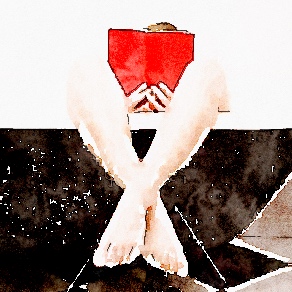
The greatest – the first, the last and the only, some would say – haiku poet was Matsuo Basho (1644-1694) but we’re not going to enter into a thorough discussion of his qualities right now because:
a) it’s getting on for midnight and I’ve got to go to work tomorrow, and
b) nobody’s first introduction to a poet or a style of poetry should be spoiled by literary criticism.
(You’ll just have to subscribe and wait until I revisit the topic.)
I love haikus because I love my poems evocative, ephemeral and emotive. The best haikus are capable of combining those three qualities within measly seventeen syllables.
(We’ll take this step by step.)
Evocative
With plum blossom scent,
this sudden sun emerges
along a mountain trail
Ephemeral
Wrapping dumplings in
bamboo leaves, with one finger
she tidies her hair
Emotive
A weathered skeleton
in windy fields of memory
piercing like a knife
All Together Now
Seas slowly darken
and the wild duck’s plaintive cry
grows faintly white
All four haikus are by Matsuo Basho as translated by Sam Hamill.
You might also like: ⇒ Matsuo Basho on Classical Japanese Database: some of his poetry in the original, in Latin transcript & English translation ⇒ Matsuo Basho: Frog Haiku - in 32 different English translations in the Bureau of Public Secrets


Not converted yet – but I HAVE learned something! Des.
LikeLiked by 1 person
I’ll have to make more of an effort then (to convert you). 🙂
LikeLike
It took me years to get my head round the idea of haiku being poetry because I first came across them as works of art composed of Japanese calligraphy and untranslated but appreciated for purely visual aesthetics (and sound). I didn’t really pay attention for not understanding Japanese. When my youngest was in primary school a decade or so ago the only poetry they learnt in her class was haiku because her arts graduate teacher was mad about them and poetry was no longer a core part of English primary curriculum. So my daughter would show me her haiku in her english notebook and I’d insist they were nice words but no way those words made a poem. Even now when I write one form of haiku or another I still struggle with the concept of it being poetry as it’s more attuned to motto writing than verse, although some haiku do have such a power and potency as to be undoubtedly imbued with poetic essence. Thanks for sharing links, I’d not seen those resources previously. Happy haiku-ing!
LikeLiked by 1 person
Haiku always appealed to me for the reasons I mentioned in the post but I understand exactly what you mean about them being like mottoes. I think they’re so different from traditional European poetry that it can be difficult to appreciate them; after all especially in translation they seem to have neither rhyme, nor rhythm & those are the chief characteristics pf poetry for us.
LikeLiked by 1 person
Pingback: The Cricket in the Helmet & Warrior Dreams – Waterblogged